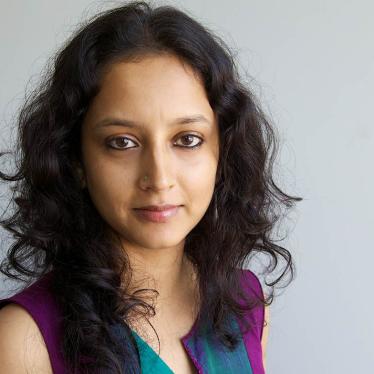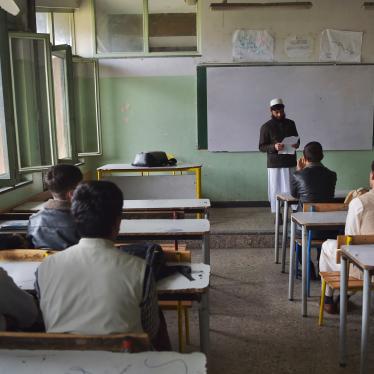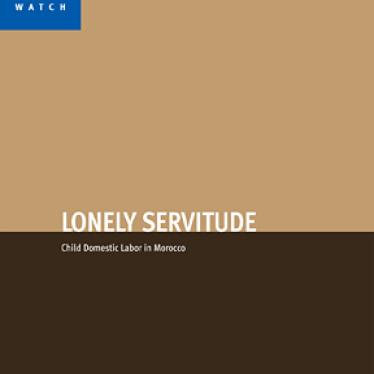More than 1100 dead, many others coping with temporary or permanent disabilities, and people still missing. The 24 April 2013 Rana Plaza building collapse – Bangladesh’s worst ever industrial disaster – has left the country reeling and Bangladeshi rights groups working overtime to help affected families.
Nearly two months after the building collapsed, the World Bank (WB) published its ten-year progress report looking at poverty trends in Bangladesh, titled Bangladesh Poverty Assessment: Assessing a Decade of Progress in Reducing Poverty, 2000-2010. “These are impressive achievements!” the report exclaimed while describing the country’s success in reducing poverty, and Bangladesh surely deserves some credit. But while the report looked at a wide variety of economic indicators in making its assessment, it failed to address the critical links between poverty and human rights, especially in three areas: disability, labour protections, and gender-based violence.
Disabling environments
The report’s 262-pages make no mention of the connection between poverty and disability. Although the report’s discussion of safety nets includes a brief description of Bangladesh’s cash-transfer scheme for people with disabilities, it does not present data on poverty rates among these individuals and their families. This omission is particularly stark coming close on the heels of the Rana Plaza disaster. A May 2013 estimate from an international NGO stated that 189 survivors of the collapse may develop long-term disabilities; at least 17 people have already undergone amputations.
Estimates vary, but according to the Centre for Disability in Development, a local NGO, approximately 16 million people with disabilities live in Bangladesh today. Disability and poverty are often mutually reinforcing. Many disability rights groups – both local and international – say that people with disabilities are overrepresented among those living in absolute poverty, by one WB estimate accounting for 1 in 5 of the poorest people.
Things are even more difficult for women with disabilities, with research suggesting that they experience higher rates of ill-treatment, neglect and abandonment, thus further increasing their risk of poverty. I have seen evidence of this during my own research on economic rights within marriages in Bangladesh. One woman said her husband threw her out and later divorced her because she gave birth to a child with a disability. She was unable to find employment with hours and conditions that would allow her to care for her child. Another woman, whose husband abandoned her while she was pregnant, said she struggled with a prolapsed uterine and was unable to afford treatment, leaving her dependent on her poor widowed mother as her pain prevented her from working.
For people with disabilities, society is often ridden with barriers, preventing access to education, health care and employment. In the context of poverty alleviation and employment, the WB pointed out that Bangladesh has to grapple with a growing demand for jobs, especially skilled, salaried work, urging investment in “skill development” to prepare the burgeoning youth for the current labour market. But by excluding people with disabilities from their poverty assessment, the Bank missed a critical opportunity to redefine ‘skill’and to highlight the importance of investing in environments that enable such individuals to work.
Excluding people with disabilities is costly. A 2009 International Labour Organisation (ILO) study of 10 low- and middle-income developing countries in Asia and Africa estimated the related economic losses at between 3 and 5 percent of a country’s GDP. For example, Vietnam lost an estimated USD 1821 million annually, either because of poor work environments that did not allow employees with disabilities to be as productive as they could be, or because they were excluded from the labour market altogether. More importantly, the ILO study showed that people with disabilities are not less productive because they are disabled – but because they live and work in environments that are disabling. According to the ILO, changes in environment, including improvements in education, transport and accessibility, can narrow the gap between the actual and potential productivity. And when it comes to poverty reduction, a January 2013report by the international NGO Save the Children, which assessed the impact of its project aimed at empowering poor Bangladeshi communities, revealed that income generation programmes, unless specifically tailored to include people with disabilities, will not benefit some of the poorest.
Conducting a poverty assessment that factors in criteria affecting a specific section of the population may be methodologically challenging and expensive, yet not impossible. Papers written or commissioned by the WB, especially on “development and disability”, have repeatedly called for such data collection and analysis, including a joint call with the World Health Organisation (WHO) in 2011 for UN agencies to “[r]egularly include relevant disability data into statistical publications.”
The WB should implement its own recommendations. It should help Bangladesh develop country surveys that capture disability-related information and include these in poverty assessments. The WB should implement these measures in consultation with local disabled persons’ organisations, which have consistently advocated such inclusion. Doing so would pave the way for more incisive policy prescriptions for poverty alleviation.
The worker and the law
The Bank notes that low wages are Bangladesh’s comparative advantage, but cautions that such wages should not be the “only competitive advantage that Bangladesh can offer investors as it comes at the expense of the wellbeing of the poor.” Stating that the non-farm manufacturing sector, including garment manufacturing, contributed to poverty reduction through increased job opportunities, the Bank provides an account of the growth in “real-income per capita” over time “owing to an increase in the share of employed workers.” But the report’s discussion of this trend glosses over the exploitative working conditions and inadequate labour protections that many Bangladeshis endure.
It is true that the garment industry is an important source of income for its mostly female workforce. Eighty percent of Bangladesh’s 3-5 million garment workers are women. But the Bank makes virtually no mention of worker conditions or labour rights, or of the industry’s years of labour unrest, which has been instrumental in forcing improved wages and working environments.
Garment factories are not the only dangerous workplaces in Bangladesh. Human Rights Watch (HRW) has shown that health and safety conditions in some tanneries in the Hazaribagh area of Dhaka are deplorable. Some workers had broken their arms or lost fingers or hands in serious accidents with the tannery machines. Much work in tanneries involves measuring and mixing chemicals, and hauling chemically-saturated hides in and out of pits. Some of the chemicals used are carcinogenic or otherwise toxic. Fungal infections, scabies, hives and contact dermatitis (a skin reaction to irritants or allergens) are common among employees. Many of them also suffer from respiratory illnesses and chest pains. Many workers said their tanneries did not supply protective equipment, grant sick leave or compensate them for illness and injury. In some tanneries, girls and boys, some as young as 11, work 12 or even 14-hour days, considerably longer than the five-hour limit established by law for adolescents. Despite a law against children doing dangerous work, child workers told HRW that they handle skins in pits full of chemicals, cut hides with razor blades, and operate dangerous machinery without any training or supervision. And for all this, they are paid as little as USD 0.50 a day.
Non-profit groups monitoring occupational health and safety in Bangladesh observe that in an average year, more than a hundred workers are killed while working at building sites. In the ship-breaking industry, despite new safety regulations passed in 2011, 15 workers died in accidents in the Chittagong yards in 2012. Similar numbers die in rice mills each year.
A proper labour inspection mechanism is the bare minimum Bangladesh needs to show its trade partners that it takes workplace safety seriously. But thus far the country has been ill-equipped to ensure actual compliance. In June 2012, the Inspection Department had just 18 inspectors to monitor an estimated 100,000 factories in and around Dhaka. Although the law allows for the imprisonment of those responsible for violating workplace health and safety provisions, when violations were found the common penalty was merely a fine of around USD 13.
But it’s not simply a case of needing more inspectors and increased penalties – inspectors can hardly protect workers’ rights if they continue their cosy relationship with industry. A deputy chief inspector with the Inspection Department told HRW in June 2012: “We always try to maintain good relations with management. Usually we give advance notice [of an inspection]. Sometimes we send a letter, sometimes we phone if the number is available.”
Meanwhile, the WB points to how corruption dampens the investment climate but says absolutely nothing about the risk that the close relationship between labour inspectors and factory management poses for workers. Instead, by listing labour regulations as a “major business constraint,” the Bank gives the impression that such regulations are a hindrance rather than important, even life-saving, rights. There are only two references in the 2013 report to labour laws, pointing out that “appropriate labour laws are just as important as investments in raising worker productivity.” However, there is no acknowledgement that Bangladesh’s current labour laws are woefully inadequate.
Most damningly, Bangladesh’s Labour Act of 2006 creates serious barriers to unionisation and collective bargaining for better wages and working conditions. For example, until it was amended in July 2013, the law required the government to provide the names of union founders to their employers, who then often fired them with impunity. This restriction has been removed, but the amended Labour Act continues to require an unacceptably high threshold of worker agreement – 30 percent – to form a union. In addition, workers in export processing zones – a large percentage of Bangladesh’s work force – would remain legally unable to unionise. Further, a huge number of workers are excluded from coverage under the law, and do not enjoy even the minimal benefits and protections.
Bangladeshi labour activists who challenge this system endure a deeply intimidating political environment. Small gains for garment workers have come, at times, at great personal cost. Fifteen months after the April 2012 disappearance, torture, and death of labour activist Aminul Islam, a member of the Bangladesh Center for Workers Solidarity, the crime has still not been properly investigated. It took two devastating and preventable disasters – the Tazreen garment factory fire in November 2012 and the Rana Plaza collapse in April 2013 – and a nationwide and global uproar for the Bangladesh government to amend its labour law and allow some garment workers to unionise without the prior approval of employers.
When the WB looks at poverty, it is not enough to look at employment numbers and wage increases alone. To establish an accurate picture of the interplay between employment, income and poverty, any credible study must also provide context on worker’s rights and exploitative and dangerous working conditions.
‘Freedom from fear both fear and want’
The Bank’s report also ignores the connection between poverty and gender-based violence. Domestic violence is rampant in Bangladesh. In the 2007 Bangladesh Demographic and Health Survey , 53 percent of married women interviewed reported that their husbands had sexually or physically abused them. One in five married women aged 15-49 reported marital sexual violence. The economic impact of this domestic violence is staggering. A 2011 study by CARE Bangladesh pegged the annual loss to Bangladesh’s economy – in terms of health care costs, relocation, lost productivity, and legal costs – at more than 140 billion takas (USD 1.8 billion), or 2.05 percent of the country’s GDP.
Take the case of ‘Suhani’, a widowed mother living in poverty whom I met in 2011. Suhani’s daughter was married, but her husband beat her and often sent her to her mother’s house for money. Suhani pawned her jewellery to meet the son-in-law’s demands, but her daughter came back again after some time, this time severely beaten and with an eye injury resulting in impaired vision. Suhani took out a loan to cover medical expenses. What little personal assets she had slowly dissipated in dealing with the cycle of beatings her daughter endured.
In another case, ‘Farida’told me how her parents gave her gold jewellery, a cow and 16,000 takas (USD 205) at the time of her marriage. Farida’s husband subsequently took her money and sold the jewellery, the cow and its calf, using the proceeds to buy land in his name. He beat her when she protested and eventually turned her out. Farida now lives alone with her daughter, and struggles to survive as a daily-wage agricultural labourer.
Stories like Suhani’s and Farida’s demonstrate why it is so important to consider the critical link between gender-based violence and poverty when assessing development goals, especially as the 2015 deadline for achieving the UN’s 2000 Millennium Development Goals approaches and the international community debates what development goals should look like after 2015. The same day the WB issued its report on poverty in Bangladesh, the WHO sounded a global alarm on violence against women, especially intimate-partner violence, which it described as a public health problem of “epidemic proportions”. In effect, the report dismissed the notion that reductions in maternal mortality rates alone could be used to claim ‘progress’ on women’s health where the same health systems failed to respond to gender-based violence.
The WB’s report and its critical omissions reflect deeper problems surrounding the discourse on economic development. When the UN General Assembly approved the Millennium Development Goals in 2000, it did not require that countries or international agencies analyse and report back on levels of inequality and discrimination as part of the process of realising these goals. That was a mistake. Today, there is consensus that equality and non-discrimination should be central to any development agenda. There is also a growing consensus that progress – be it on poverty reduction or health – should be measured by disaggregated data, taking into account gender, disability, ethnicity, caste, tribe and other relevant factors to better understand whether the most needy and marginalised populations are benefiting.
International human rights organisations and networks like the Association for Women’s Rights in Development, the Center for Economic and Social Rights, Amnesty International, and HRW have consistently argued that a global development agenda cannot be divorced from basic human rights guarantees, including civil and political rights like freedom of expression and association, and economic and social rights like the right to food and education. A development agenda that allows states to claim to have made “economic progress” without regulating corporations and businesses in order to uphold human rights, including labour laws, is not one that respects human dignity.
There is no question that poverty assessments are complex, methodologically challenging and expensive. Of course, not every survey needs to specifically analyse every marginalised group, or every policy that might have an impact on poverty. But nothing should prevent international agencies like the WB, which have some of the best development experts in the world, from better integrating these issues, or at least providing much-needed context in its reports. The WB should, in fact, go further, and put human rights at the centre of its strategies by actively enabling civic participation and social accountability, so that the people affected by development projects can participate in and have oversight of these efforts. It should commit to eliminating discrimination and ensuring equality in all of its activities, and implement mechanisms to keep from exacerbating existing human rights problems. This approach should be at the heart of its work and reports.
Earlier this month, in a powerful statement on how progress and development should be measured, Navanethem Pillay, the UN High Commissioner for Human Rights, said the new post-2015 agenda “should address both sides of the development challenge – that is freedom from both fear and want.” She added that “equality must underpin” any new framework of development to replace the “widely-discredited approaches that focus on narrowly-conceived notions of economic growth.”
Women and girls should inhabit a world that gives them the freedom to live without fear of violence. Workers and labour rights activists should be able to live without fear of being arrested and tortured for demanding basic protections. People with disabilities should live without the fear of being excluded from work or driven to poverty. As an international agency that claims to be committed to eradicating poverty, the WB should revisit its current approach to see what critical issues it has overlooked, and be careful to include those considerations in future poverty assessments.








